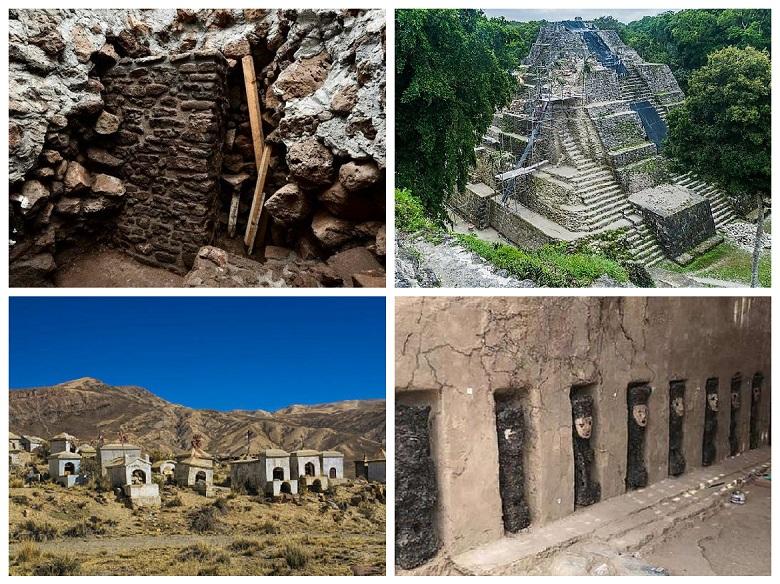It would seem that so much is known about ancient civilizations that it is unlikely that something can surprise scientists and fans of this topic. But archeology is interesting because it sometimes presents very unusual discoveries. More recently, historians have noted a whole galaxy of interesting finds in this region.
15th-century tombs in Bolivia

In the department of Vichada, Bolivia, a cemetery with human remains and other artifacts was found, dating back to the 15th century, that is, the period of the Inca expansion. For this reason, it is believed that the four tombs discovered may have belonged to the Aymara rulers, a group of indigenous peoples who were conquered by the Inca empire.
Bolivian archaeologist Wanderson Esquerdo stated: “The cemetery we discovered had two unique tombs, one of which is characteristic of monumental archeology. It contained the remains of about 108 people and metal objects, plates, and vessels made of ceramics and wood.”
Tunnels and frescoes in Teotihuacan
In the archaeological site of Teotihuacan, a UNESCO World Heritage Site since 1987, two more critical archaeological discoveries have been made. Between the pyramids of the Sun and the Moon, in particular on the Plazuela de las Columnas, “four major archaeological deposits” were found.
According to La Jornada, these deposits “contain more than a thousand ceramic fragments, more than 500 fragments of Mayan painting, more than 2,600 fragments of human remains, hundreds of other objects and animal remains.” The discovered mural was fascinating to scientists because it shows that the Mayan elite may have lived in this place.
A few months later, the existence of a tunnel and an underground chamber in the pyramid of the moon was confirmed. They are believed to have been created as an imitation of the other world, in addition to being “used for ritual purposes.”
Wooden Idols with masks in Peru
The city of Trujillo, Peru, contains the ruins of Chan Chan, an archaeological site that was declared a UNESCO World Heritage Site in 1986. According to a press release from the Ministry of Culture, Peruvian archaeologists have discovered a fantastic passageway in one of the local citadels, decorated with earthen reliefs depicting waves and landscapes and murals dominated by images of cat-like “lunar animal.” In addition, 19 wooden idols with clay masks, which are more than 750 years old, were found.
The sculptures with different faces are anthropomorphic characters, which average 70 centimeters in size. Unusually, each sculpture has a beige clay mask. A wand is held in one hand, and a round object is attached to the back, which can be a shield.
Mayan ruins in Guatemala
Another fantastic find was found in the jungles of Guatemala. In the Mayan Biosphere Reserve, located in this Central American country, a study was conducted using laser scanning technology from the air. It turned out that under the dense crowns of the jungle are hidden 61,480 structures belonging to this ancient Mesoamerican civilization. Researchers have discovered many structures – from pyramids and palaces, from ceremonial centers to houses.
Agricultural lands, access roads to them, as well as roads between cities were also found. “Overall, the terraces, irrigation canals, reservoirs, fortifications, and dams demonstrate the amazing amount of terraforming performed by the Maya in their homeland,” said Francisco Estrada-Belli, a researcher at Tulane University.
Temple discovered after the earthquake in Mexico
This archaeological discovery in Mexico attracted media attention not only because of the discovery itself but also because of how it was found. The September 19, 2017 earthquake that shook several states of the former Aztec homeland revealed the existence of the Teopansolco pyramid temple, an archaeological site located in Cuernavaca. According to Expansión de México, it was “a temple dedicated to Tlaloc, the rain god of ancient Mexico.”
In addition, according to BBC World estimates, the building “dates back to 1150, when the region was dominated by the culture of the Tlahuica, one of the Aztec peoples of the central region of modern Mexico.” The found temple, which is a little over 800 years old, is older than the main buildings of Teopanzolco.
